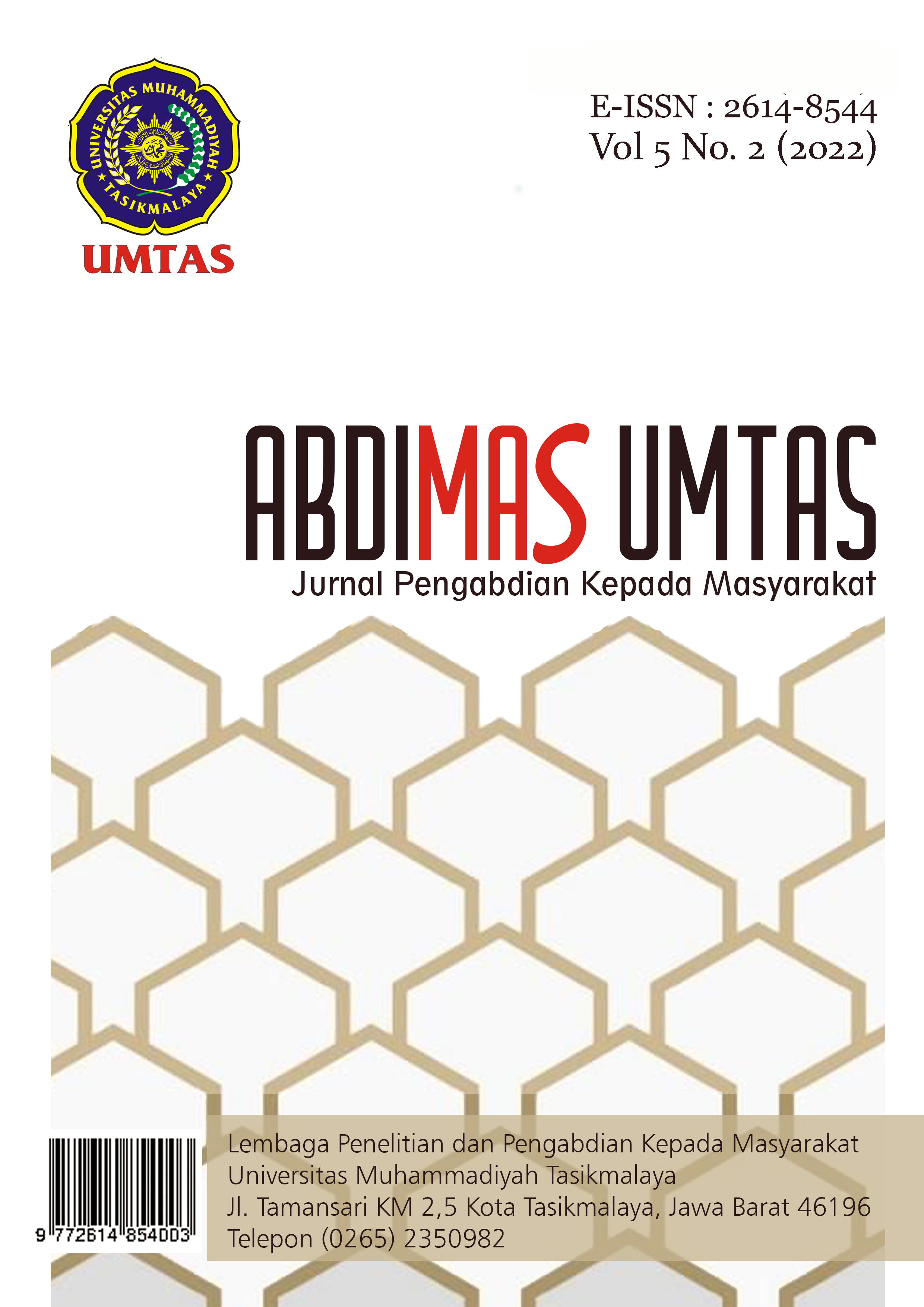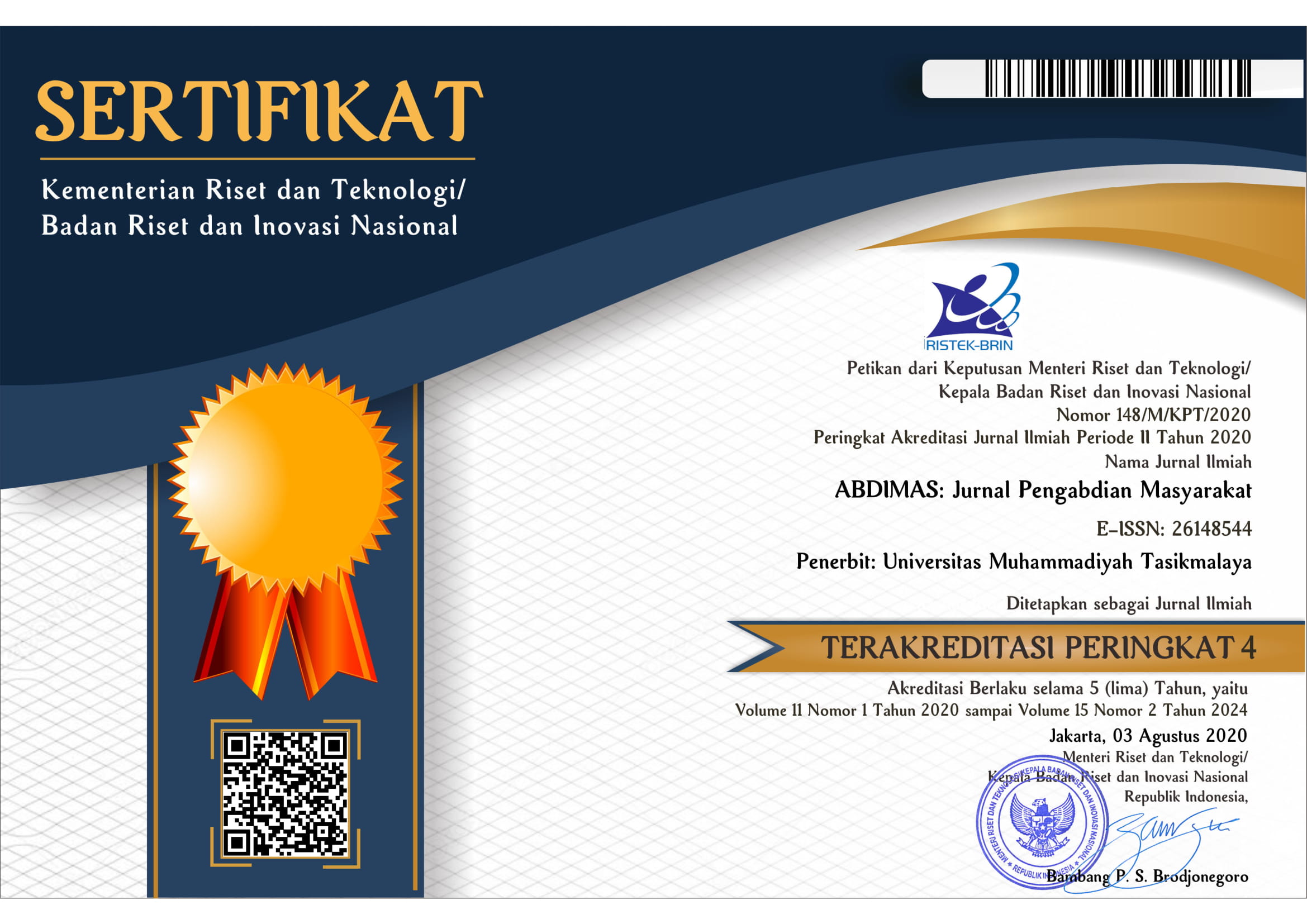The Application of Corn Post-Harvesting Technology to Improve the Quality of Production and Economic Value of Corn Skin Waste
DOI:
https://doi.org/10.35568/abdimas.v5i2.1556Keywords:
Technology, Post Harvest, Corn Shell WasteAbstract
The main problem faced by partners in the post-harvest process of corn is the peeling of corn husks which is still very slow, it makes high moisture and moldiness easily, the shelling process is still carried out traditionally so it takes longer time, besides that the farmers also have not mastered corn post-harvest technology so that the quality and selling price of corn is low. From the partners' problems it was agreed to carry out a practical and standardized handling of the corn post-harvest process, so that farmers do not spend a lot of money, time and energy but still guarantee the quality of corn production. The application of peeling and shelling technology simultaneously can be a solution so that the moisture content of corn is not too high, corn is not easy to mold and corn kernels do not break, so it can save costs. In addition, farmers are also given a measuring device for water content and how to use it, how to package and store corn production so that the quality is maintained. To take advantage of the large amount of corn husk waste, farmers are given training on how to process corn husk waste into handicraft products with economic value. The purpose of this technology product being disseminated are 1) partner farmer groups know and understand the standardized postharvest corn process, 2) to know postharvest technology that is more practical, maintain and improve the quality of corn production, 3) able to operate and master the use of machines, 4) able to use water content measuring instruments, and 4) to know how to process corn waste into economic value craft products from corn husks. In achieving this goal, several activities were carried out, namely socialization, training and assistance to partners.
Downloads
References
Deskripsi Daerah Kabupaten Bantaeng, https://sulselprov.go.id/pages/des_kab/1diakses 22/04/2021)
Firmansyah, I.U., S. Saenong, B. Abidin, Suarni, dan Y. Sinuseng. 2006. Proses pascapanen untuk menunjang perbaikan produk biji jagung berskala industri dan ekspor. Laporan Hasil Penelitian, Balai Penelitian Tanaman Serealia. Maros. p. 1-15.
Novi et all, 2020. Pemanfaatan Limbah Kulit Jagung untuk Meningkatkan Perekonomian di Desa Pejok Kecamatan Kepohbaru Kabupaten Bojonegoro
Paramita, N. 2010. Eksplorasi Olah Serat Jagung (Zea Mays) Melalui Proses Teknik Non Tenun untuk Alternatif Produk-Produk Kria. Skripsi, Fakultas Seni Rupa dan Desain. Bandung: Institut Teknologi Bandung
Warintek. 2007. Jagung (zea mays), klasifikasi dan standar mutu. www. warintek.progressio.or.id. p. 1-3














